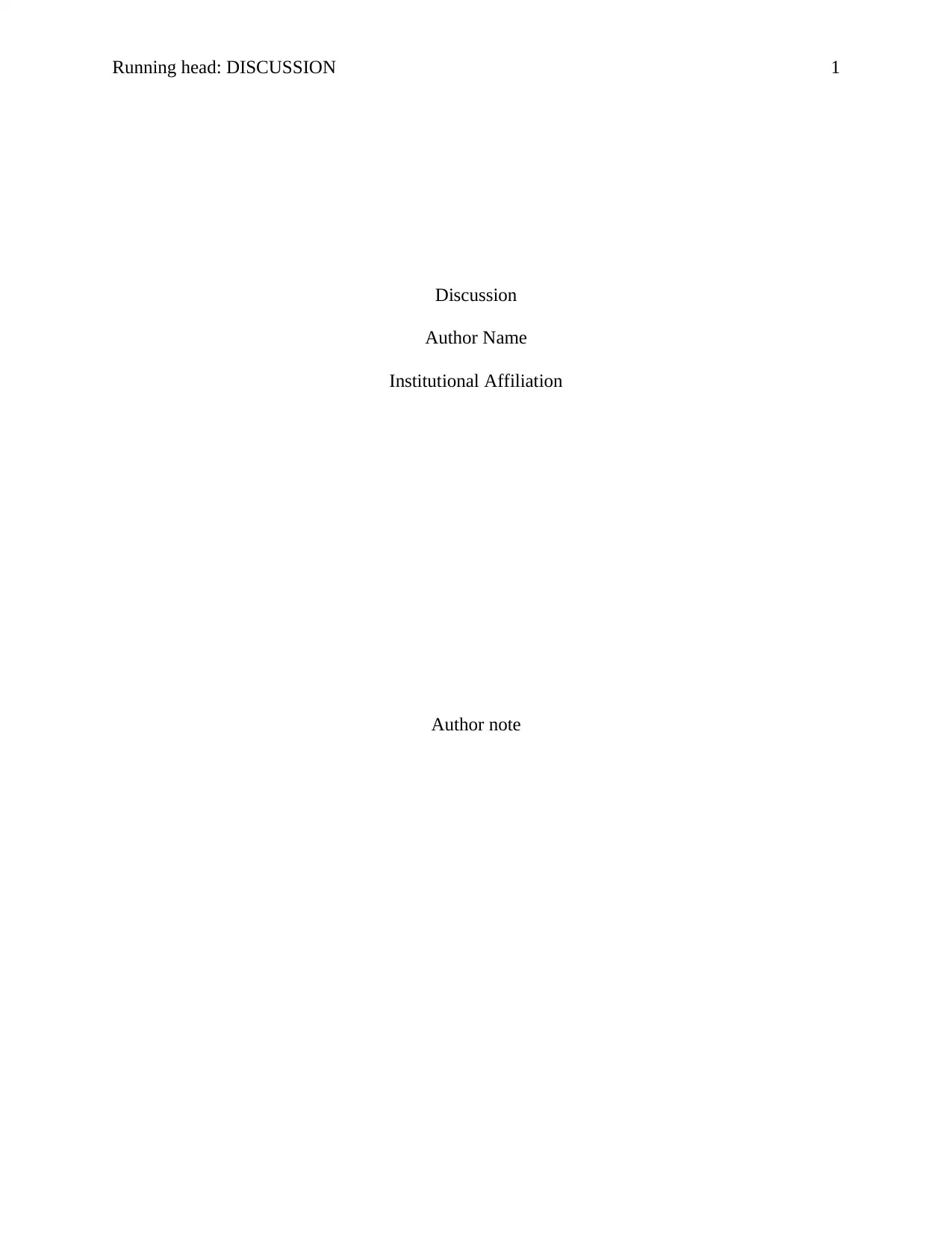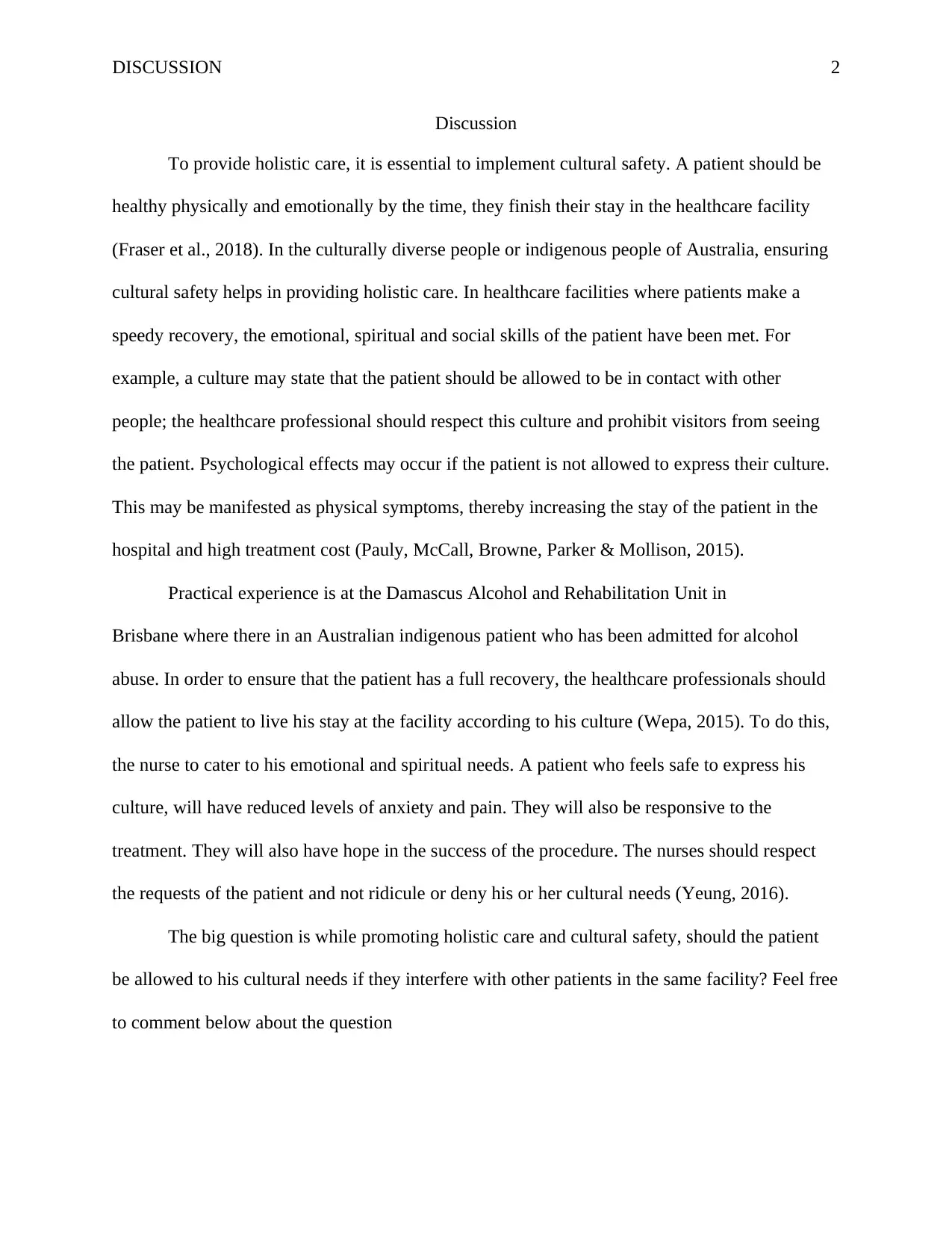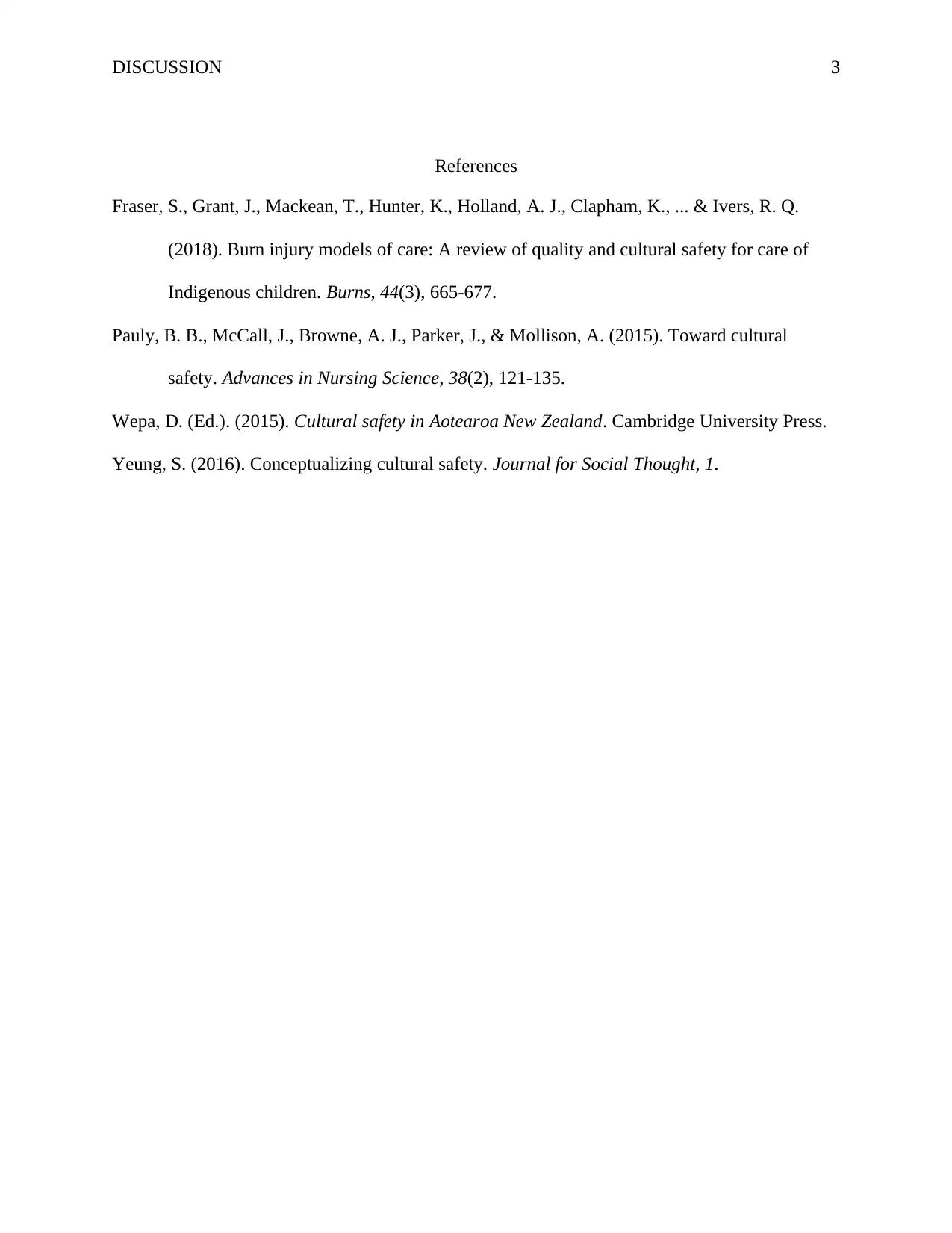Cultural Safety and Holistic Care for Indigenous Australians
VerifiedAdded on 2022/11/24
|3
|520
|262
Discussion Board Post
AI Summary
This discussion post explores the critical role of cultural safety in providing holistic care, particularly for Indigenous Australians. It emphasizes that true patient well-being encompasses physical, emotional, spiritual, and social dimensions. Drawing from practical experience at the Damascus Alcohol and Rehabilitation Unit in Brisbane, the discussion highlights the importance of respecting a patient's cultural needs to facilitate recovery. The post argues that allowing patients to express their culture reduces anxiety and pain, improves treatment responsiveness, and fosters hope. It concludes by posing a thought-provoking question about balancing a patient's cultural needs with the needs of others in a healthcare facility, inviting further engagement and discussion. The post is supported by relevant academic literature, emphasizing the need for healthcare professionals to be culturally sensitive and responsive to the unique needs of Indigenous patients.
1 out of 3








![[object Object]](/_next/static/media/star-bottom.7253800d.svg)